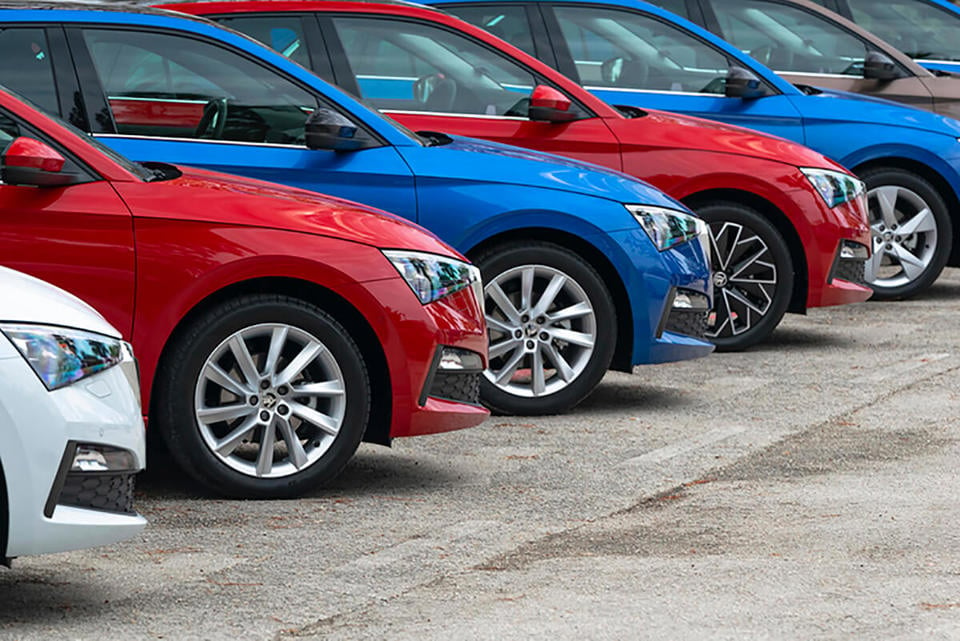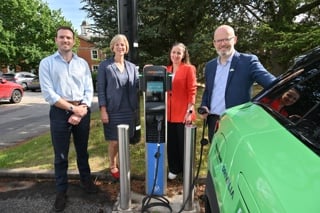The nation’s grey fleet – private vehicles used for business – consists of 14 million cars – 40% of all vehicles on the road – and costs employers more than £5.5 billion a year in mileage claims and car allowances, new research suggests.
According to ‘Getting to grips with grey fleet’, a new report produced by the Energy Saving Trust (EST) and commissioned by the British Vehicle Leasing and Rental Association (BVRLA), some 12 billion business miles are driven each year on Britain’s roads by employee-owned cars.
Using Government figures and data from fleets, EST researchers were able to produce a profile of a typical grey fleet vehicle and compare it to other alternatives, including rental cars, car club vehicles and company cars.
They found that the average grey fleet car was ‘exhausted’ – being older, more polluting and potentially more dangerous than its counterparts.
BVRLA chief executive Gerry Keaney said: “The invisible grey fleet is hiding in plain sight of Britain’s bosses and is a blind spot in the Government’s transport strategy.
“The Approved Mileage Allowance Payments (AMAP) system used for reimbursing grey fleet drivers is the only part of the motoring tax regime that provides no incentive to drive fewer business miles or use cleaner vehicles. This blind spot is wasting taxpayer money, costing businesses millions of pounds, damaging our environment and making our roads more dangerous.”
The BVRLA is calling for a concerted effort from company bosses and policymakers to tackle these issues. It is targeting a 50% reduction in grey fleet mileage and costs by 2020, and is urging Government ministers to help by highlighting the alternatives to grey fleet use and offering best practice guidance, particularly for public sector organisations.
Keaney added: “Cutting grey fleet mileage by just 15% would be the equivalent of taking 225,000 cars off the road in emissions terms.”
Andrew Benfield, EST’s group director of transport, said: “Switching to more modern vehicles for work purposes can lead to significant cost savings, cut vehicle emissions and improve employee safety.
“Bosses should introduce rigorous electronic mileage management systems to reduce ‘mileage inflation’ by employees claiming a mileage allowance, and remove the incentive to drive unnecessary business miles.
“Car rental should be adopted for any work-related vehicle journey over 55 miles and a vehicle should be leased for employees driving at least 10,000 business miles per year.
“Employers should also incentivise alternatives to driving such as public transport, cycling and walking.”
Andrew Franklin, director for public sector at Europcar, which supported the research, told Fleet News that in many cases there will be no cost or safety control around the grey fleet. “It is, literally, an accident waiting to happen,” he said. “Yet, the solutions are out there for employers.
“Many organisations scaled back their fleets during the recession, and this undoubtedly contributed to the increase in grey fleet usage which presents some real challenges when it comes to duty of care. With some of the oldest cars on UK roads averaging over 8.2 years old, the risks for employees using their own vehicles are greater, from breaking down to driving unroadworthy vehicles.
“Of course, the other challenge for organisations with employees using their own vehicles is control on cost. Often the pence per mile rate paid out to employees via expenses can be well in excess of the cost of a hire car for the day.
“Environmental issues are a factor too, where employees are using their own cars as these typically older vehicles are more likely to have higher CO2 emissions.”
He continued: “The BVRLA report is likely to be sobering for many employers – but the reality is that solutions are available. And they don’t have to mean compromise on employee productivity and efficiency.”
Oz Choudhri, head of public sector UK & Ireland for Enterprise Rent-A-Car, said the report highlighted solutions that fleets can implement right away.
“Central and local government is taking a leadership role in reducing its reliance on mileage reimbursement for business travel, and a number of forward-thinking local councils and authorities are doing the same,” he said.
“However, the research shows that there is still a lot more to be done to encourage drivers away from using their own cars for work.
“Moving away from the grey fleet requires a change in driver behaviours, underpinned with a firm understanding of where, when, how and why people drive for work. Only with the data at their fingertips can fleet managers make the best and most cost-effective decisions.
“We’ve worked with a number of customers at the strategic level to help them analyse the true impact of the grey fleet and come up with sensible alternatives such as car clubs, daily rental and public transport. It’s about cost, sustainability, risk, and driver safety – some of the most important issues facing the fleet industry.”
For more see this week's Fleet News. To access the full report, click here.























Matt Dyer - 22/07/2016 12:16
Matt Dyer, Managing Director, LeasePlan UK and Vice Chairman, BVRLA comments: “There is an absolute need for business owners to realise the requirement to manage their grey fleet, both in terms of the true monetary cost to their organisation, through mileage claims and car allowances, but also the significant environmental impact it is having. Grey fleet, in the form of cash allowances, seem on the surface to be a convenient, low-intervention solution. However, few organisations are exercising any significant degree of control over them. Privately owned vehicles can be poorly managed, are older, built to have outdated emissions standards and are without modern safety features, never mind whether there is a valid MOT, business insurance and service records. Companies need to have a central view of mileage and business travel expenses by setting a mileage limit and emissions baseline whilst identifying any driver and vehicle issues. But even without this in place there are more simple measures out there that can be enlisted such as car scheme salary sacrifice, pool cars and daily rental vehicles. These measures and innovative ways of thinking will help staff make better choices.”